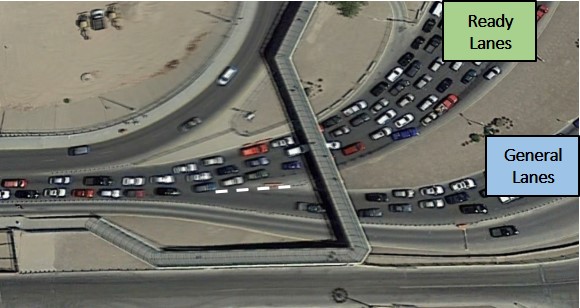EL PASO, Texas -- U.S. Customs and Border Protection’s El Paso port of entry has implemented the designation of “Ready Lanes” at the Ysleta port of entry.
In order to address traffic congestion issues, Ysleta has swapped locations of the Ready Lanes and general lanes. By switching their locations, it allows Ready Lane traffic to flow freely through the left side of the port without being impacted by general lane back-ups. The segregated SENTRI Lanes remain the same and are not impacted.

Entry
Travelers who use the Ready Lane will have the benefit of a shorter wait time versus using the general lanes of vehicle traffic because of the RFID technology. While the wait time will not be as short as the lanes for pre-approved, low-risk SENTRI travelers, those using the Ready Lanes can generally expect to see wait times that are significantly shorter as compared to using the general traffic lanes.
In FY‘16, Ready Lane waits averaged five-percent shorter wait-times than those in general lanes.
While Ready Lanes provide a wait-time benefit to travelers, they also assist CBP. Since Ready Lanes are more efficient than general lanes, they process more vehicles (approximately 23 more per hour) than general lanes.
Since the implementation of the “Western Hemisphere Travel Initiative” that was launched June 1, 2009, U.S. and Canadian citizens entering the United States by land or sea from Mexico, Canada and the Caribbean are required to present a valid, WHTI-compliant document. By using a WHTI-compliant document that is an RFID-enabled travel card, it will allow for more efficient processing of travelers at the border, since RFID technology allows CBP officers to receive information about travelers in a quicker manner.


